

THURSDAY, OCTOBER 3, 2024 at 7:30 p.m.
HODGSON CONCERT HALL




THURSDAY, OCTOBER 3, 2024 at 7:30 p.m.
HODGSON CONCERT HALL

Thursday, October 3, 2024 at 7:30 p.m.
Hodgson Concert Hall
UGA Performing Arts Center
University of Georgia Symphony Orchestra
Mark Cedel, Conductor
Nicholas Han, Assistant Conductor
Prelude to Act III, “Lohengrin”
Sinfonische Metamorphosen nach Themen von Carl Maria von Weber
Allegro
Turandot, Scherzo
Andantino
Marsch
INTERMISSION
Symphony No. 3, A minor, opus 56, “Scottish”
Andante con moto – Allegro un poco agitato
Vivace non troppo
Adagio
Allegro vivacissimo
Program Notes by Nicholas Han
Prelude to Act III, Lohengrin (3’)
scored for: 3 flutes, 3 oboes, 3 clarinets, 3 bassoons, 4 horns, 3 trumpets, 3 trombones, tuba, timpani, percussion, and strings
Lohengrin, first performed in 1850, is a Romantic opera in three acts, written by Richard Wagner (1813-1883). The young King Ludwig II of Bavaria was so moved by Wagner’s opera that he bankrupted his country to build the famous castle, “Neuschwanstein”, that is so beloved by today’s tourists to Southern Germany. The “Mad” King later bankrolled Wagner for all the latter’s big ambitions, before his own mysterious death is 1886. Based on the legendary 13th century romance of Lohengrin, a knight of the Holy Grail, who is sent in a boat pulled by swans to rescue the maiden, Elsa, who must never ask his name. The “Bridal Chorus” from the beginning of Act III is now universally recognized as “Here Comes the Bride.” The exciting Prelude to Act III is nearly as wellknown, and remains a major part of the orchestra repertoire. This edition is written with the concert ending as recorded by the great Arturo Toscanini.
Sinfonische Metamorphosen nach Themen von Carl Maria von Weber (20’) scored for: 2 flutes, piccolo, 2 oboes, english horn, 2 clarinets, bass clarinet, 2 bassoons, contrabassoon, 4 horns, 2 trumpets, 3 trombones, tuba, timpani, percussion (bass drum, chimes, cymbals, glockenspiel, small cymbals, small gong, snare drum, tambourine, tenor drum, tom-tom, triangle), and strings
During the 1930’s, Paul Hindemith (1895-1963) fell into disfavor with the Nazi regime and emigrated to the United States. His earlier musical style was rather dissonant, both bad in National Socialists eyes. He ultimately took a position at Yale University in 1940, became an American citizen, and established an influential career as a teacher of theory and composition – even leading an early music ensemble. In 1951, he made a major contribution to the repertoire of the concert band with his Symphony in Bb, commissioned by the US Army Band. Symphonic audiences know him best for his symphony, “Mathis der Mahler,” (1935) extracted from the opera of the same name, and for the suite.
Sinfonische Metamorphosen stems from 1940, the time of the composer’s immigration to the United States, with help from Leo Massine, a Russian choreographer and ballet dancer. Massine wanted a ballet suite based on melodies of von Weber, but because of Hindemith’s sound of dissonance, the collaboration was dropped. Clearly, Massine wanted “more” von Weber and “less” of Hindemith – his pungent, modern style was too much for the Massine. Luckily, the material was kept, and latter reworked by 1943 into four large movements for symphony orchestra. The material (actually, Hindemith borrowed more than just “themes”) is derived primarily from piano duets by von Weber. This work is probably the composer’s most popular composition.
The first movement is a vigorous march whose melodies sound vaguely Shostakovichian at times. Dissonant, thick textures alternate with simple tunes creatively orchestrated. This movement is based on von Weber’s fourth of the Eight piano duets, Op. 60. After all the modernity and harmonic complexity, it is a true Hindemith trademark when the
movement ends on a powerful, simple major triad. The second movement is based on von Weber’s incidental music to Schiller’s adaptation of Turandot, the same Carlo Gozzi fantasy about China that Puccini used for his opera. The use of a pentatonic scale, a five-note scale instead of the western eight note scale. The tune is passed around the orchestra to almost every section, accompanied by an ever-changing thread of rhythms and secondary material. In the middle, after a descending “vortex” like a musical whirlpool, Hindemith changes the whole texture and states a fugue, first played by the trombone, followed by almost everyone sequentially, and even includes the percussion section in a brief solo. The movement ends with a solemn chord. The third movement retains most of the substance, and the ABA structure, of von Weber’s Andantino con moto from Six Pieces for two pianos. The flute solo in the end is solely Hindemith’s. For the last movement, Hindemith uses the funeral march from von Weber’s Op. 60 piano duets but with a significantly quicker pace. He develops the opening motive into the main theme, heard first in the woodwinds. In the trio section, the horns introduce a second theme, bringing a more heroic character. The two themes then alternate throughout the movement, ending with an exciting ending lead by the horn calls and celebratory support from the whole orchestra.
Symphony No. 3, A minor, opus 56, “Scottish” (40’) scored for: 2 flutes, 2 oboes, 2 clarinets, 2 bassoons, 4 horns, 2 trumpets, timpani, strings.
Felix Mendelssohn (1809-1847) was a prodigy, born into a distinguished family of Jewish bankers and philosophers. He and his sister Fanny, also a talented composer and pianist, were raised in an intellectual and highly supportive artistic family. Both matured early, and a stream of musical compositions flowed from them both. Felix was clearly one of the most important German composers of his time and infused the expressiveness of early romantic music with the clarity and intellectuality of Mozart and Haydn’s composition style. He created a significant body of work in his relatively short life, including major works for orchestra that constitute and important part of today’s repertoire. These works include seven concert overture, six concertos, and five symphonies.
Mendelssohn was inspired by a visit to Scotland in 1829 to write two important works: the Fingal’s Cave Overture and the “Scottish” Symphony. In relation to the latter, he wrote at length of his impressions of a visit to the rugged ruins of Holyrood: “We went, in the deep twilight, to the Palace of Holyrood, where Queen Mary lived and loved. There’s a little room to be seen there, with a winding staircase leading up to it. This the murderers ascended, and finding Rizzio, drew him out. Three chambers away is a small corner where they killed him. Everything around is broken and moldering, and the bright sky shines in. I believe I found today in the old chapel the beginning of my Scottish Symphony.”
The first movement, marked by its dramatic contrasts, showcases Mendelssohn’s gift for creating vivid musical landscapes. The music alternates between moments of introspection and powerful, sweeping melodies, evoking the grandeur of the Scottish landscape and the tumultuous emotions it inspired in the composer. The interplay between the various sections of the orchestra adds depth and complexity to the composition, creating a sense of tension and release. The second movement, a lively
scherzo, captures the spirit of Scottish folk dances. Mendelssohn’s keen sense of rhythm and his use of lively melodies and syncopated rhythms give the music a distinct Scottish flavor. The playful and energetic atmosphere conjures images of traditional dances and joyful gatherings, providing a contrast to the more contemplative nature of the preceding movement. The third movement, marked Adagio, transports the listener to a world of tranquility and introspection. Mendelssohn’s gift for lyrical melody shines through, as he weaves a captivating and expressive theme that unfolds with tenderness and grace. The music evokes a sense of longing and nostalgia, reflecting the composer’s fascination with the historical heritage and romantic allure of Scotland. The symphony concludes with a dynamic and triumphant fourth movement. Mendelssohn’s masterful orchestration and his use of bold and majestic themes create a sense of grandeur and celebration. The music builds to a resounding climax, incorporating elements of Scottish folk tunes and culminating in a triumphant finale that leaves the listener with a sense of awe and exhilaration. As instructed by Mendelssohn, all of the movements are to be performed without a break.
Mark Cedel: Now in his 31st year at UGA, Mark Cedel brings a wealth of professional experience to his position as Director of Orchestral Activities. Prior to his appointment at UGA, he was Associate Conductor of the Charlotte Symphony Orchestra. In his four seasons with that orchestra, he conducted over 200 performances; appearing on every series offered by the orchestra. Before joining the Charlotte Symphony, Cedel was Principal Viola and Assistant Conductor of the Charleston (SC) Symphony Orchestra for nine years. While in Charleston, he served for two seasons as that orchestra’s Acting Music Director. From 1986-1990, he was a member of the artist faculty at the Brevard Music Center and was principal conductor of the Brevard Repertory Training Program.
In addition to directing orchestral activities at UGA, Cedel served as professor of viola from 1994-2002. During that period he performed, toured, and recorded regularly as extra/substitue viola with the Atlanta Symphony Orchestra, including its northeast tour with concerts in Carnegie Hall. He returned to teaching viola for the 2009-2010 academic year, while a search was conducted to fill the position.
Cedel has been associated with many orchestras in the southeast. This includes Principal Viola of the South Carolina Chamber Orchestra and the Guest Principal Viola of the Savannah Symphony, and orchestras in Augusta, Macon, and Jacksonville.
Upon graduation, Cedel accepted the position of Distinguished Visiting Professor at the Universidade Federale do Rio Grande do Norte in Brasil. There he was Principal Viola of the Orquestra da Camera UFRN and violist for the Quarteto UFRN, which made several national tours. Cedel frequently returns to Brasil to participate in festivals and guest conduct.
Nicholas Han: Born and raised in Seattle, Washington, Nicholas made his conducting debut with The Music & More SummerFest Music Festival in Bosnia and Herzegovina. He earned his Undergraduate degree in Violin Performance at Central Washington University in 2020, and his Masters in Orchestral Conducting at Oklahoma State University in 2023. In 2022, he obtained the position as assistant conductor for the Oklahoma Chamber Symphony and was the Apprentice Conductor for the Oklahoma City Philharmonic in May 2023. He is currently pursuing his Doctoral of Music Arts degree at University of Georgia. Nicholas also obtained the position as Cover Conductor for the Gwinnett Symphony Orchestra in October 2023. His recent conducting engagements include guest conducting LA Conducting Workshop and Competition Orchestra and Gwinnett Symphony Orchestra.
Nicholas, over the summer of 2022, was selected as one of 3 winners for the ICWC (International Conducting Workshop and Competition in Atlanta, Georgia. He was also selected as a 1st place winner and received the Audience Prize in the LA Conducting Workshop and Competition in Garden Grove, California. He has worked with Dr. Scott Weiss, Neil Thomson, Diane Wittery, and Philip Greenberg. His principal mentors include Nikolas Caoile, Thomas Dickey, Alexander Mickelthwate, and Mark Cedel.
VIOLIN I
Alexis Boylan, co-concertmaster
André Araújo de Souza, co-concertmaster
Clarissa Tamara
Jhonni Campos
Carlos Brena
Sarah Nienhiser
Zeyu Yuan
Brian Roach
Lela Stair
Raunak Das
Vic Jeon
Chelsea Afful
Ellis Kim
Sage Codispoti
Rea Aiyer
Nicholas Olmstead
VIOLIN II
Ori Kang, principal
Simms Murray
Adelmo Giménez
Andreea Barca
Kiera Johnson
Lauren McClary
Briana Darden
Jen Edwards
Shazan Samnani
Leo Jahn
Chloe James
Athziri Moreno-Martinez
Emily Robbins
Rohan Pise
Hazel Moreno
Mark Cedel, Conductor
Nicholas Han, Assistant Conductor
VIOLA
Rogelio Bonilla-Piedra, co-principal
Asha Baylor, co-principal
Kailey Ford, assistant principal
Jensi Perng
Jodie Stone
Rachel Liu
Daniel Boscan
Mason Minutella
Ashley Belscher
Dorothy Park
Marissa Evans
Clinton Stempien
Dani Chun
Tess Redden
Seneca Fisher
CELLO
Gabriella McClellan, principal
Thomas Lamon, assistant principal
Zachary Helms
Joshua Nguyen
Ryan Dater
Olivia Durrence
Ian Koontz
Joshua Aderhold
William Slater
Tristan Dempsey
Charton Hills
BASS
Wueliton Dal Pont, principal
Austin Carter
Ricardo Karelisky
Jordan Askew
Madeline Bower
Peyton Lightcap
V’Choi Garfield
FLUTE
Shana Stone, principal
Kimmie Bateman
Sam Malave, piccolo
OBOE
Amanda Withrow, co-principal
Emma Gordon co-principal
Ashley Na
Marcus Lewis
CLARINET
Sarah Christie, co-principal
Ryan Hanling, co-principal
Garrison Rider, co-principal
BASSOON
Caleb Jackson, co-principal
Jazmyn BarajasTrujillo, co-principal
Daniel Johnson, co-principal
HORN
Joseph Johnson, co-principal
Jake Wadsworth, co-principal
Addie Talley
Connor Parr
Gracie Gambrell
TRUMPET
Adriano Estraiotto, co-principal
James Vaughn, co-principal
Toby Johnson
Michael Mank
TROMBONE
Ian Wolff, principal
Benjamin Novo
Jonas Ventresca
TUBA
Hunter Kane
TIMPANI
Henry Campbell, principal
PERCUSSION
Tanner Fallin
Carrington Lauck
Rachel Martin
LIBRARIAN
Alexis Boylan
PERSONNEL and PRODUCTION
Ricardo Karelisky

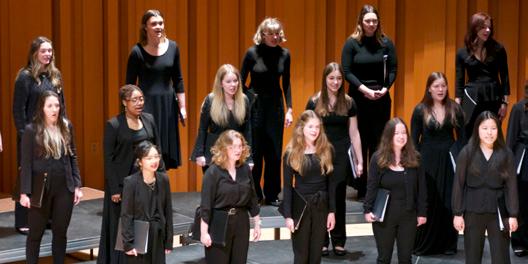
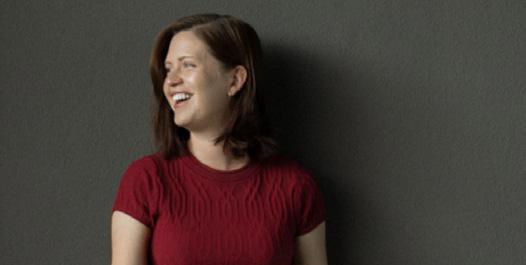
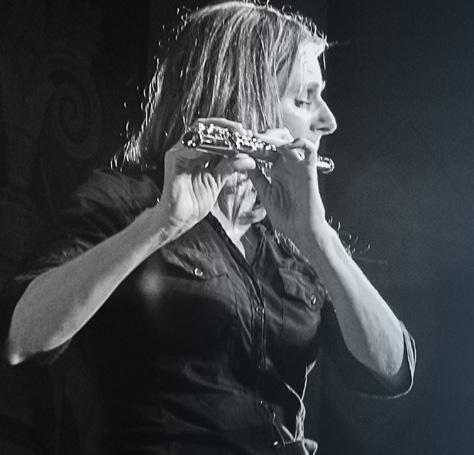
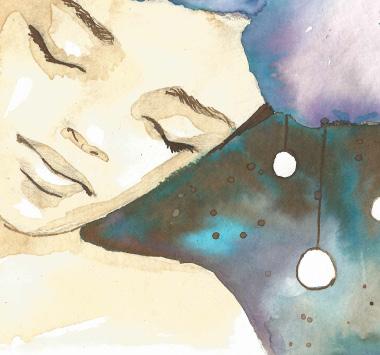
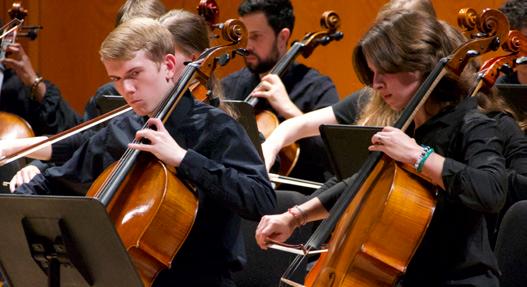

TUES 10/8
7:30 p.m.
Hodgson Concert Hall FREE CONCERT
WED 10/9
6 p.m.
Edge Recital Hall FREE CONCERT
WED 10/9
7:30 p.m.
Ramsey Concert Hall THURS 10/10
7:30 p.m.
Hodgson Concert Hall
UNIVERSITY OF GEORGIA MEN’S AND WOMEN’S GLEE CLUBS
This concert features a series of composers celebrating American voices.
GUEST ARTIST RECITAL BETH WEISE, TUBA
Edge is located in the Hugh Hodgson School of Music, 250 River Road, Athens GA
FACULTY ARTIST SERIES Amici dei Fiati (Friends of Winds)
ANGELA JONES-REUS, flute THIS EVENT IS FREE MEET & GREET RECEPTION TO FOLLOW Reservations are encouraged but not required Featuring: D. Ray McClellan, clarinet, Erica McClellan, piano & Gabriella McClellan, cello
UNIVERSITY OF GEORGIA HODGSON SINGERS AND UNIVERSITY CHOIR
Join these two of our choirs as they sing about the joys and the journeys we experience as we follow our dreams. Introducing Daniel Shafer, interim associate director of choral activities.
FRI 10/11
7:30 p.m.
Hodgson Concert Hall FREE CONCERT
7:30 p.m.
Ramsey Concert Hall FREE CONCERT MON 10/14
UNIVERSITY OF GEORGIA PHILHARMONIA
The University Philharmonia offers an outlet for musical expression to all string players at the University of Georgia.
LISZT AND MEDTNER
EVENING RECITAL AMERICAN LISZT SOCIETY FESTIVAL
As part of the 60th Anniversary American Liszt Society Festival, this recital feautres Terrence Wilson and Yakov Kasman, piano; Clara Osowski, mezzo-soprano, and more.